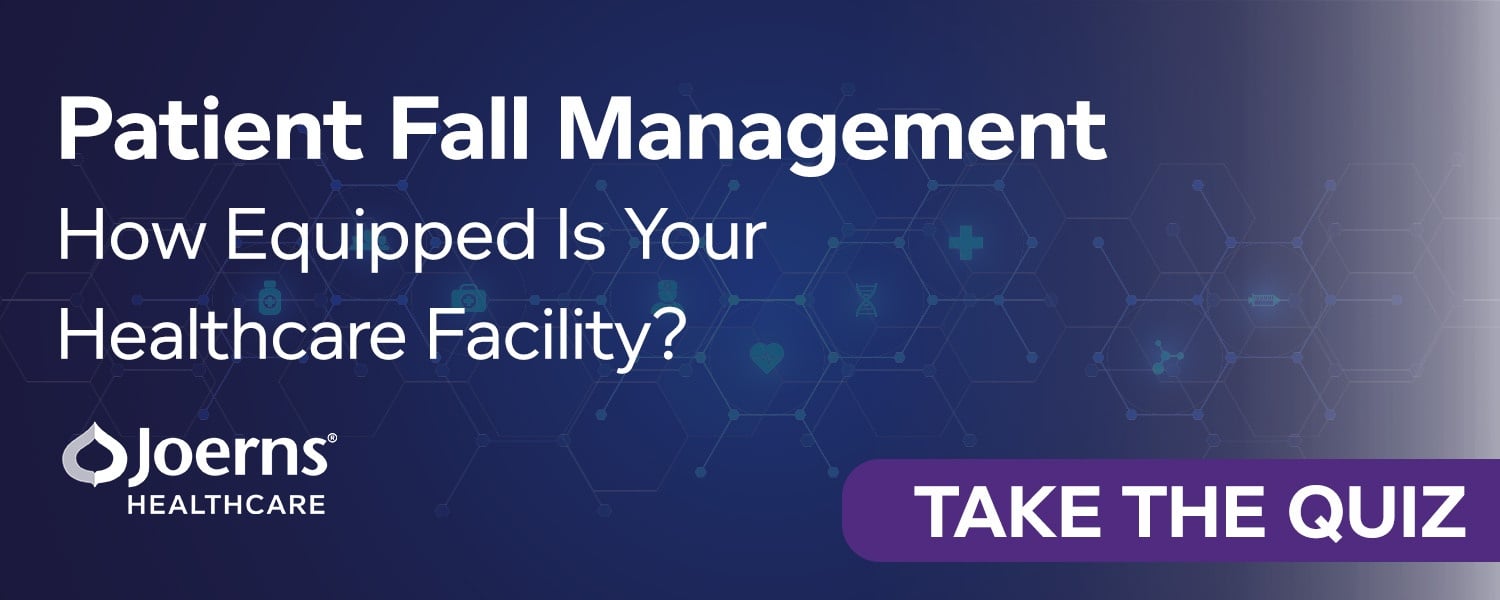With over 35 million fall-related injuries each year, healthcare support teams often are frontline caregivers in preventing patient falls in healthcare facilities. By identifying risk factors and helping patients modify their environment and lifestyle, nurses can help reduce the number of patient falls and injuries by up to 35%.
While the role of nurses in fall prevention programs is critical to health outcomes, their roles can vary depending on each patient’s specific needs. In this blog post, we’ll outline the important role nurses play in fall prevention and provide tips for ensuring they have all the resources they need to succeed.
1. Completing and Documenting Fall Risk Assessments
The first role of nurses in fall prevention programs is to identify which patients are at risk of falling. Many healthcare facilities have standardized fall risk assessment tools that nurses can use to identify patients who are at high risk for falling.
Once a patient has been identified as being at high risk, it is important for the nurse to document this in the medical record. This documentation will help ensure that all healthcare team members are aware of the patient’s fall risk status and can take appropriate precautions.
2. Documenting Patient-Specific Fall Prevention Practices
After a patient has been identified as being at high risk for falls, it is important to document specific fall prevention practices that should be put into place. These may include measures such as increased supervision, low wide beds, and the removal of tripping hazards. Again, this documentation will help ensure that all healthcare team members are aware of the fall risk status of the patient and can take appropriate precautions.
3. Monitoring A Patient’s Medical Condition for Changes
A patient’s medical condition can change quickly, and it is important for nurses to be vigilant in monitoring for any changes that could affect the patient’s fall risk status. For example, a sudden change in blood pressure or heart rate could make a previously low-risk patient become high-risk. Similarly, a change in mental status could make it more difficult for a patient to understand or comply with safety measures.
This is why consistent rounding is an effective strategy for fulfilling the role of nurses in fall prevention programs. With consistent rounding, patients’ needs are anticipated ahead of time so support can be put in place before a condition becomes urgent.
Regular assessment of their needs helps prevent falls by minimizing their discomfort. Ensuring their pain is under control, their possessions are within reach, and their toileting needs have been met, is a simple way to mitigate any increased risks.
4. Educating the Patient and Family on Fall Prevention
Another role of nurses in fall prevention programs is to help patients and their families participate in fall prevention efforts. Patients should be educated on hazards in their environment and how to prevent falls. Families should be taught how to recognize when their loved one is at increased risk for falling and what they can do to help prevent falls from happening.
5. Maintaining the Supplies Needed to Prevent Patient Falls
To prevent patient falls, it is important for nurses to have all needed supplies on hand. These supplies may include items such as bed rails, non-slip mats, grab bars, or raised toilet seats. Patients who do not have access to these items may be more likely to fall.
The most efficient way to keep track of the supplies needed to reduce patient falls is by using a medical asset tracking system. With an asset tracking program in place, nurses can quickly determine equipment location and usage in a matter of seconds.
Conclusion: The Role Of Nurses In Fall Prevention Programs
Nurses play an important role in fall prevention programs and can be the first line of defense against falls in healthcare facilities. By getting a fall management assessment of your healthcare facility, you can identify areas where nurses can focus their efforts on preventing falls.
If you’re interested in implementing a comprehensive fall prevention program that keeps patients safe and reduces the risk of injuries, contact us to get started.
